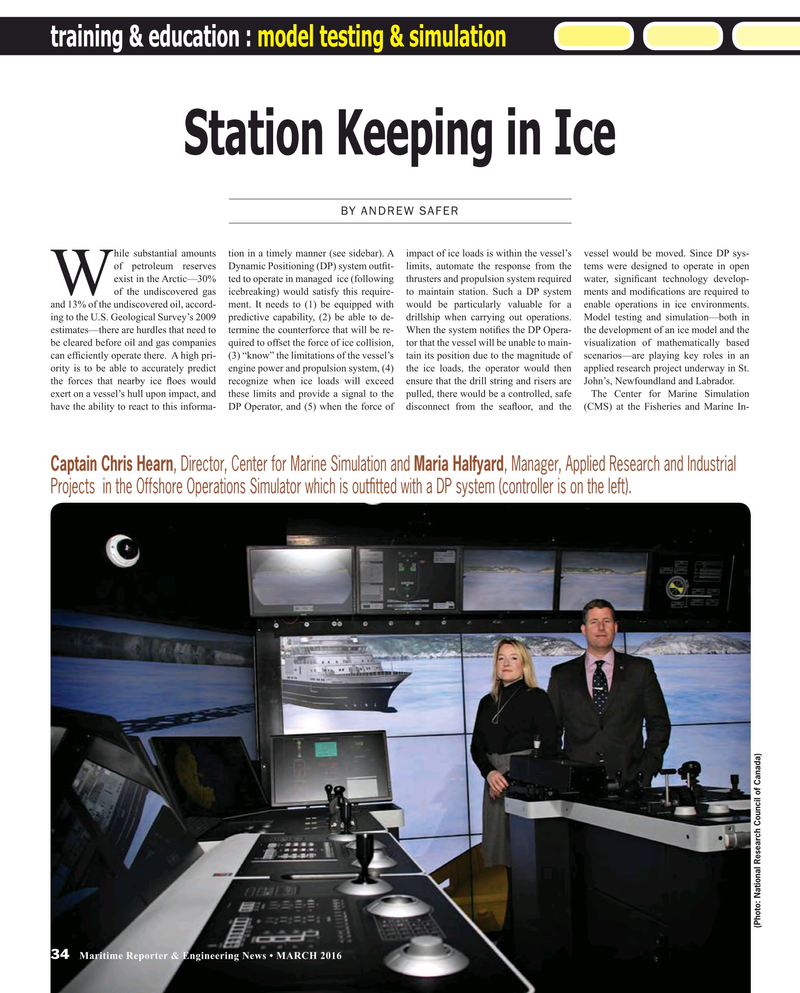
Page 34: of Maritime Reporter Magazine (March 2016)
Green Marine Technology
Read this page in Pdf, Flash or Html5 edition of March 2016 Maritime Reporter Magazine
training & education : model testing & simulation
Station Keeping in Ice
BY ANDREW SAFER hile substantial amounts tion in a timely manner (see sidebar). A impact of ice loads is within the vessel’s vessel would be moved. Since DP sys- of petroleum reserves Dynamic Positioning (DP) system out? t- limits, automate the response from the tems were designed to operate in open exist in the Arctic—30% ted to operate in managed ice (following thrusters and propulsion system required water, signi? cant technology develop-
Wof the undiscovered gas icebreaking) would satisfy this require- to maintain station. Such a DP system ments and modi? cations are required to and 13% of the undiscovered oil, accord- ment. It needs to (1) be equipped with would be particularly valuable for a enable operations in ice environments. ing to the U.S. Geological Survey’s 2009 predictive capability, (2) be able to de- drillship when carrying out operations. Model testing and simulation—both in estimates—there are hurdles that need to termine the counterforce that will be re- When the system noti? es the DP Opera- the development of an ice model and the be cleared before oil and gas companies quired to offset the force of ice collision, tor that the vessel will be unable to main- visualization of mathematically based can ef? ciently operate there. A high pri- (3) “know” the limitations of the vessel’s tain its position due to the magnitude of scenarios—are playing key roles in an ority is to be able to accurately predict engine power and propulsion system, (4) the ice loads, the operator would then applied research project underway in St. the forces that nearby ice ? oes would recognize when ice loads will exceed ensure that the drill string and risers are John’s, Newfoundland and Labrador. exert on a vessel’s hull upon impact, and these limits and provide a signal to the pulled, there would be a controlled, safe The Center for Marine Simulation have the ability to react to this informa- DP Operator, and (5) when the force of disconnect from the sea? oor, and the (CMS) at the Fisheries and Marine In-
Captain Chris Hearn, Director, Center for Marine Simulation and Maria Halfyard, Manager, Applied Research and Industrial
Projects in the Offshore Operations Simulator which is out? tted with a DP system (controller is on the left).
(Photo: National Research Council of Canada) 34 Maritime Reporter & Engineering News • MARCH 2016
MR #3 (34-39).indd 34 3/2/2016 10:20:24 AM

 33
33

 35
35
